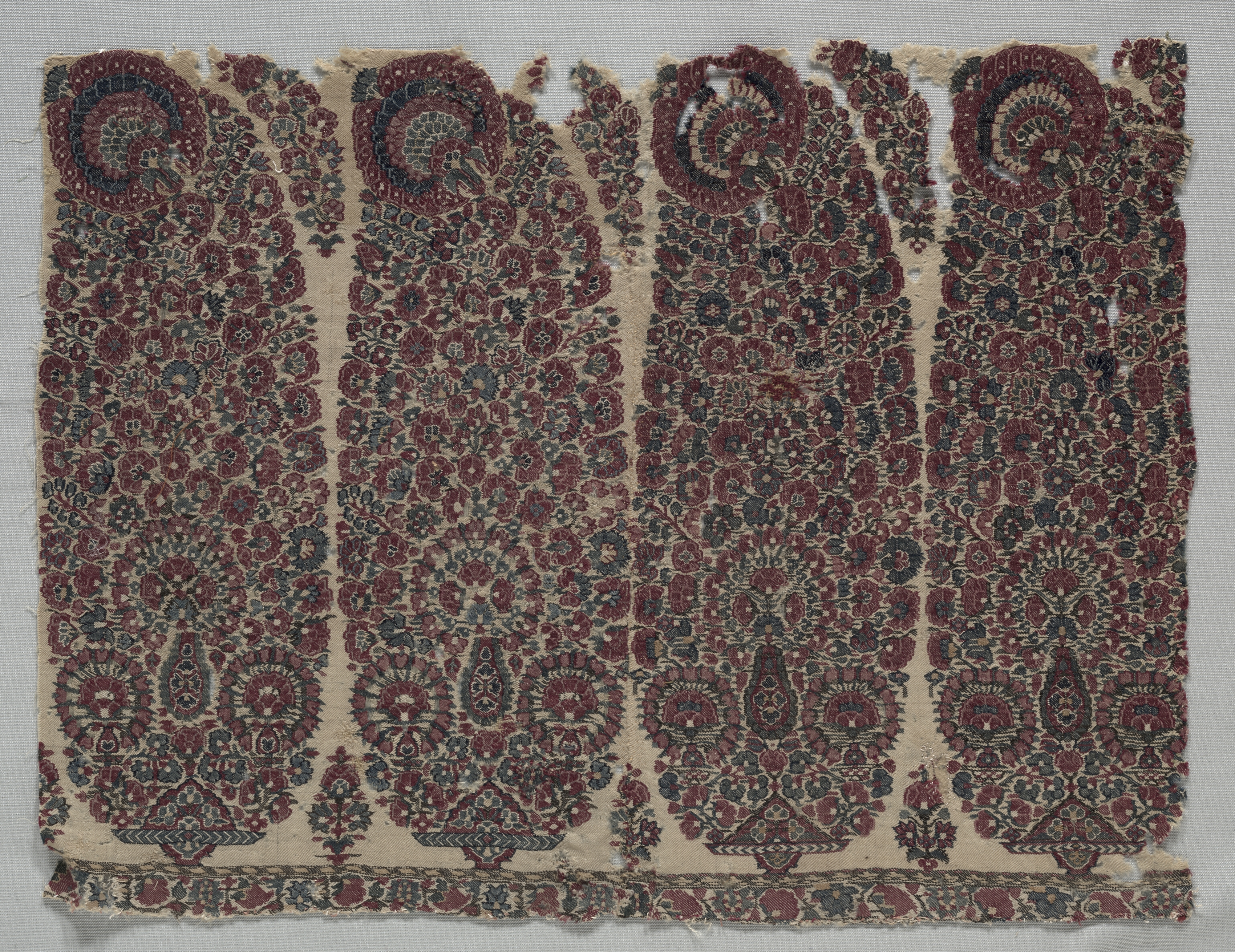The Cleveland Museum of Art
Collection Online as of April 23, 2024

Border of a Shawl
c. 1825–30
Overall: 37.1 x 48.9 cm (14 5/8 x 19 1/4 in.); Mounted: 54.9 x 66.7 cm (21 5/8 x 26 1/4 in.)
Purchase from the J. H. Wade Fund 1925.500
Location: 237 Himalayan
Did You Know?
The top of the teardrop design recalls fanned-out peacock feathers.Description
Kashmiri shawls were extremely popular in the early 1800s, especially among foreigners to the Indian subcontinent. Made in the mountainous region of northwest India from wool from mountain goats from nearby Ladakh, the fabrics were especially prized for their softness and their beautiful symmetrical designs, often called paisley in English.This textile fragment was once owned by Ananda Coomaraswamy (1877–1947), a Ceylonese (Sri Lankan) art historian and collector who is credited with introducing South Asian art to museums in the United States.
- ?–1925(Ananda K. Coomaraswamy [1877–1947], sold to the The Cleveland Museum of Art) #301925–The Cleveland Museum of Art, Cleveland, OH
- Ames, Frank. The Kashmir Shawl and Its Indo-French Influence. Woodbridge, Suffolk: Antique Collectors' Club, 1997. color pl. 161, 165. 166
- Himalayan Gallery 237 Rotation. The Cleveland Museum of Art, Cleveland, OH (organizer) (March 22-September 8, 2024).Himalayan Gallery 237 Rotation. The Cleveland Museum of Art, Cleveland, OH (organizer) (September 22, 2023-March 3, 2024).Nature Supernatural (Indian Painting rotation). The Cleveland Museum of Art, Cleveland, OH (organizer) (September 22, 2023-March 3, 2024).
- {{cite web|title=Border of a Shawl|url=false|author=|year=c. 1825–30|access-date=23 April 2024|publisher=Cleveland Museum of Art}}
Source URL:
https://www.clevelandart.org/art/1925.500